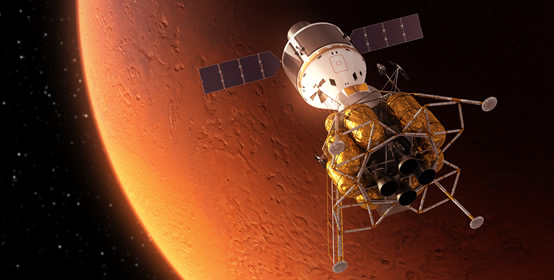
Space travel enthusiasts are rejoicing at the news that the recent budget passed by the United States Congress increases NASA's appropriation by almost 10%. 1.3 billion dollars have been added to their budget for 2016, marking the largest increase the program has seen in a decade. The projects may be funded with this money are staggering. Here is a look at some of the more interesting developments that may arise because of this budgetary windfall.
The first priority deals with the emergent technology of drones. Experience in other countries and on the streets of America show that drones have the potential to be utterly transformative to modern life. It is no exaggeration to say that they may be similar to cell phones and the Internet in the unexpected impact that they could have on us. Industry experts are predicting that is many as a million drones could take to the air in America next year. They are expected to perform a wide variety of tasks, but probably the most important will be automated aerial package delivery. This situation has the potential to devolve into chaos, as there is no national oversight of these pilotless machines. NASA will now be able to develop an air traffic control system for drones that will make it possible for more drones to operate in concert and in small areas. Home delivery by drone might now be just around the corner.
Moving slightly higher in the atmosphere, NASA is testing new types of airfoils for use in supersonic aircraft. One of their more unusual ideas is the bidirectional aircraft. The airfoil shape that provides the most lift for a slow-moving aircraft is very different from the airfoil shape that should be used for a craft that is moving fast, and this has been an insoluble problem since the early days of aeronautics. Many planes and rockets have tried to walk the line between sleek and stable, and there is always a trade-off. The bidirectional craft solves this problem by literally changing direction in flight. When it is taking off from the ground, this cross-shaped craft has precisely the right aerodynamic qualities to make it gain altitude easily, quickly, safely and with a minimum of expenditure of energy. However, once it reaches a high altitude, the control areas changes along the arms of the cross, the plane turns in midair, and the craft continues to fly rotated 90 degree angle from what it was before. This presents a new aerodynamic profile that is narrow, trim, and supremely well designed for supersonic flight.
NASA is always looking for ways to bring more mass higher into the atmosphere for less expenditure of energy. Efficiency is job number one when designing spacecraft. This means that less is always more, and things that can be renewed or reused in space are considered at a premium. For example, NASA has been sending up successively smaller and smaller satellites for decades now. These satellites are easier to lift into orbit, work just as well as the large satellites of the golden age of space travel, and are much less likely to run into each other. Not only that, in the increasingly likely event that the craft are hurt by the ever-widening field of space debris surrounding the planet, they will not add as much to the problem if they are taken out of commission. Satellites the size of cantaloupes have been doing the work of older models ten times their diameter, and there are even satellites in orbit the size of postage stamps. Since these are so small and comparatively easy to launch into orbit, NASA has been able to experiment with them more. Cube satellites, the flagship of the new small satellite lines, have been made open for comment and suggestion by the public. NASA actively solicits ideas for experiments with the satellites.
The livability of astronauts in orbit is also a primary concern, and NASA intends to address these issues more fully with the 2016 budget. Astronauts will be provided with more tools to grow food inside their space stations, as advances in orbital gardening are being considered. There are also new robots dedicated to difficult repairs to the International Space Station as well, which not only improves the safety of the astronauts but frees more time for them to work on important scientific research.
In general, the future is bright for NASA. It can only be hoped the Congress will maintain this level of funding for some time. NASA is one of the most influential, innovative and efficient government agencies in American history. If they can accomplish all this with their 2016 budget, imagine what they might be able to do in another ten years.